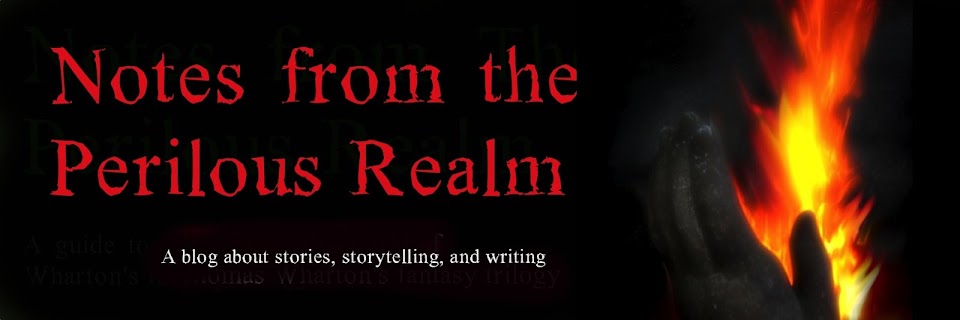
Halloween seems like a good time to talk about witches.
The Perilous Realm is of course teeming with witches of all kinds. Good witches, wicked witches, so-so witches. Sorceresses and sybils. Elf-witches of terrible power. Witches that fly with the aid of broomsticks and those that fly without any help from common household items. Fake witches with painted faces and warts glued on. Werewitches (men that turn into witches) and witchwolves (witches that turn into wolves, or is it the other way around? I can never remember). White witches and scarlet witches. Kitchen witches, weather witches, sandwiches. Crones, hags and beldames. Creepy old ladies who live alone in houses, and all the kids in town think they're witches, and you know what, some of them are.
The most famous witch, perhaps, is the witch in the story of Hansel and Gretel. Her real name was Caramelita Gumdrop. Some say she didn't actually die when Gretel shoved her into the oven -- it just slowed her down a little, giving Hansel and Gretel time to escape. She managed to crawl back out of the oven, and though it took her a while to recover from the severe burns (about three hundred years, I'm told) eventually she was back to her old tricks. Although she discovered that gingerbread was no longer very popular for enticing children, and so she built a house of chocolate. But this didn't work, because kids had wised up considerably by then. They knew that a house of candy in the middle of the woods was just too good to be true, and they stayed away. It didn't matter what she stuck to the outside of her house -- gum, licorice, toys, i-pods -- kids had gotten too smart, and they didn't fall for it.
The Perilous Realm is of course teeming with witches of all kinds. Good witches, wicked witches, so-so witches. Sorceresses and sybils. Elf-witches of terrible power. Witches that fly with the aid of broomsticks and those that fly without any help from common household items. Fake witches with painted faces and warts glued on. Werewitches (men that turn into witches) and witchwolves (witches that turn into wolves, or is it the other way around? I can never remember). White witches and scarlet witches. Kitchen witches, weather witches, sandwiches. Crones, hags and beldames. Creepy old ladies who live alone in houses, and all the kids in town think they're witches, and you know what, some of them are.
The most famous witch, perhaps, is the witch in the story of Hansel and Gretel. Her real name was Caramelita Gumdrop. Some say she didn't actually die when Gretel shoved her into the oven -- it just slowed her down a little, giving Hansel and Gretel time to escape. She managed to crawl back out of the oven, and though it took her a while to recover from the severe burns (about three hundred years, I'm told) eventually she was back to her old tricks. Although she discovered that gingerbread was no longer very popular for enticing children, and so she built a house of chocolate. But this didn't work, because kids had wised up considerably by then. They knew that a house of candy in the middle of the woods was just too good to be true, and they stayed away. It didn't matter what she stuck to the outside of her house -- gum, licorice, toys, i-pods -- kids had gotten too smart, and they didn't fall for it.
So the witch was forced to change her diet, from children to adults. Instead of using candy and treats, though, she plastered the outside of her cottage with posters that claimed she could teach you the secrets of getting rich. The grown-ups fell for it every time.


